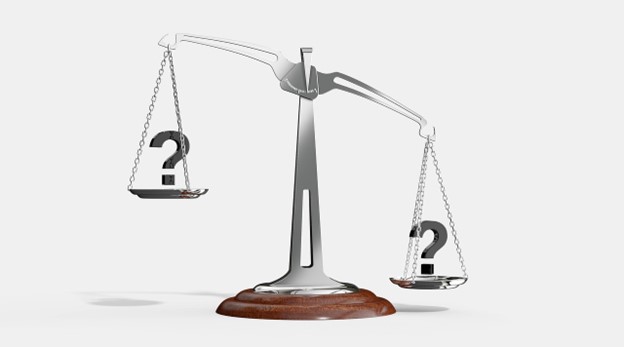Reducing risk and liability is an essential factor that we all need to consider when owning a business. After all, nobody is excited to face a lawsuit, but everyone is eager to run a business and lower its risk.
In order to reduce liability risks, you need to behave lawfully and show responsibility for your business. Nevertheless, you must obey all of the civil rights laws and other laws that give rights to your employees.
Reducing risk and liability within your business is great news, but how exactly do you achieve this? Let’s find out more in this article!
7 Key steps to reduce risk and limit liability
Provide your business with the proper structure
Structuring your business is something essential in your business. For example, if you look at a limited liability corporation (LLC), you’ll realize that they are excellent at providing small businesses with the proper protection. Nevertheless, the most beneficial part is that if you own an LLC and are sued for any particular reason, you might only lose business assets, not personal assets.
For instance, you can find time and try speaking to a lawyer to show you whether your business is suitable for a corporation, LLC, or a small business. But, first, let’s not forget that structuring your business as an LLC isn’t a bad idea.
Many businesses worldwide want to structure their business as an LLC to ensure requirements are less strict since LLCs can guard you against personal liability. Even though structuring your business like an LLC won’t protect you from all types of liability, it still provides a high level of security. In addition, it does eliminate the fear of personal liability and more.
Let’s take the case when you aren’t with an LLC. If your product injures someone, you could be liable for all the damages. However, this doesn’t happen with an LLC and is beneficial in the long run.
Keep records
One of the most important ways to reduce product liability is to keep records over a lifetime. In case of a product liability lawsuit, records will show that you are clear of any illegal actions and behaved in good manners, wholly concerned about others’ welfare.
In order to reduce the possibility of being harmed, you should carefully design your products and test them to their full potential to identify any possible product issues along the way. In addition, it’s vital to provide the customer with in-depth information regarding the product and any warnings (if any dangers are associated with it).
Business owners like Phi Dang encourage businesses to follow up and document all complaints their customers might issue. This fully demonstrates customer concern and shows that you are taking responsibility for what is happening. Furthermore, it indicates that you are concerned about their safety and take product safety seriously. After all, complaints can provide warnings about product safety and aren’t something pleasant for you.
Consider general liability insurance
If you want an alternative way how you can limit personal liability, you can do so by obtaining general liability insurance. These types of insurance policies will provide business owners with the right amount of financial protection and coverage for owners. So, if a person is filed with a lawsuit, they will be protected at a higher level than not having general liability insurance.
Personal liability insurance will vary on the insurance policy and what it covers. In addition, each insurance policy will offer different protection levels; in this case, general liability insurance protection will vary depending on your business type. Comparatively, one business owner might have lower liability coverage than the other.
Additionally, you can ask your insurer about a personal liability umbrella policy when obtaining general liability insurance. These insurance policies will provide additional coverage as a different method for the part general liability insurance doesn’t cover. In short, this additional coverage will protect you against other expenses, and the policy limits will depend on the umbrella liability policy.
Of course, before using this policy, you must contact your insurance company to ensure that this coverage is enough to protect you against additional expenses. In addition, of course, you can learn more about general liability insurance here.
Run an in-depth risk assessment
Risk towards your business can come from sides you never imagined, whether they are internal or external. A risk assessment will help you identify and reduce internal and external risks beyond your control.
When you run a detailed risk assessment, you can do the following:
- Identify both internal and external risks that come with your business
- Internal risks include internal data breaches, internal injuries of employees, inventory damage, employee negligence
- Alternatively, external risks will include vendor costs, regulatory changes, high competition, natural disasters, and more
- To further assess these, you can try estimating a probability rate of how common these events may occur and impact your business
- You can consider taking action based on these risk probabilities
A risk assessment is good because it can inform you of trouble you aren’t aware of. Nevertheless, you don’t know if this trouble is external or internal, so it’s important to be somewhat prepared before an unexpected attack occurs!
Prioritize your risks
You can be as prepared as you want, but if you fail to prioritize the issues regarding your risks, you can undergo many issues you didn’t expect. Prioritize the risks you think are the most common and the ones you think aren’t so common. Try to incorporate the following scale:
- Very likely to happen
- Some chance of happening
- A slight chance of happening
- Rarely ever to happen
Of course, it should be considered your priority to be more prepared for risks that are more likely to occur compared to those with a smaller percentage of happening. So, if you see a chance with more potential for financial damage, you must take that as a priority.
Consider sanitation procedures
No one likes to get sick; sometimes, it’s impossible to avoid it since the flu season won’t let you get away. This counts for you if you own a business that includes food serving or selling food products. To reduce outbreaks, you can implement hand sanitizers. Alternatively, you can hire a cleaning team that will frequently come to reduce outbreak risks.
This was a typical case with the Coronavirus outbreak and is still a riddle that most people can’t solve on how to prevent major attacks. However, the small steps still matter, and when people’s health is at risk, paying attention is even more vital.
Risk management for IT
The more involved you are in the online world, the more important it’ll be for you to comply with liability and property risks. Information stored digitally might possess the same risks that you see within property risks. For example, a fire, flood, computer virus, malware, etc. In order to prevent these losses, such as important information concerning customer orders, data, client records, and more. You can avoid data loss or corruption by hackers and viruses by keeping your antivirus software and firewalls up to date.
Moreover, if you are continuously using your website, it’s vital to ensure that your site doesn’t go down and that you backup critical information on your site in case of an online attack or a site crash.
With digital technology, you also have liability risks. For instance, you can face lawsuits in case of data breaches and if sensitive information is stolen from your users. Thus, it’ll damage the brand’s reputation and even make you pay large fines. Above all, you can even face copyright fines for possessing information that nobody granted you any right to do so. However, you can take the following measures to prevent these steps:
- Having a privacy policy
- Have your legal counsel approve all of your site’s content and privacy statement
- Encrypting data
It’s better to possess these than to face charges and allow online attacks to damage your company’s reputation. It is hard to build a reputation, but easy to destroy one.
Wrapping everything up
That’s about it for this article. These are our top seven key steps for reducing risk and limiting liability at your company. Especially with the uprising of the online world, it’s becoming harder to prevent risk and limit liability. However, there are always ways you can do so. The most important rule is to be prepared and prioritize your risks.
Continuously talk to your insurance providers and ensure that you aren’t going to damage your business’s reputation and pay high fines if something does happen. Above all, this will greatly depend on the industry you are in.

 Source
Source Source
Source Source
Source Source
Source






